Why IP protection serves India’s interests
- By TT News
- August 24, 2020
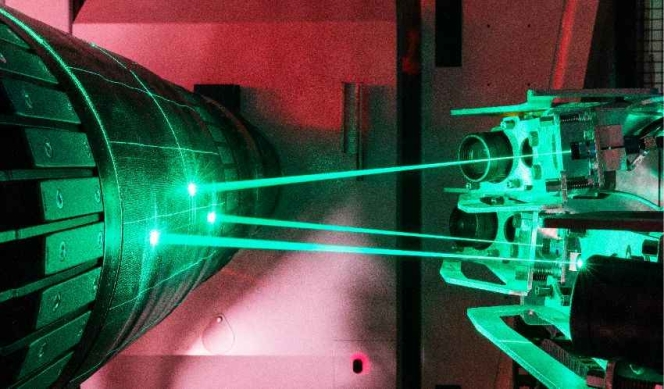
Innovation is the key to long-term success for any industrial business, and for the countries where they operate. In this article, Mike Norman, CCO at VMI Holland, explains why protecting IP is a key priority. VMI Group, based in the Netherlands, with operations around the world, is an international leader for tyre building machines.
Long live innovation!

VMI is 75 years old, and no manufacturer stays successful for so many years without a serious commitment to innovation. In the past 20 years, VMI has rewritten the book on automated tyre building. We have done that by creating manufacturing platforms capable of constant evolution, and then adding new innovations and improvements, year by year.
VMI has built a lot of trust in the market as a result of this strategy. Our customers know we invest more than any other comparable business in original R&D, and we make sure that every new idea leads to practical benefit for them.
Our business is built upon our Intellectual Property: our IP. It is what enables us to help customers face their own challenges. We are proud of the innovations we create - and we will protect our IP and our customers’ interests, anywhere, anytime.
Innovation and collaboration
In our experience, innovators like working together. It is exciting and it is a creative experience. You help each other. You get to move, develop and grow faster. You listen to each other, learn from each other and make progress faster as a result.
In the world of tyre development, we know exactly what we bring to the market, and we also know the areas that belong exclusively to our customers. Our products and solutions help make manufacturing processes more efficient, precise, controlled, more easily managed and fully auditable. That is our area, and that is where our IP is focused.
Our customers define the materials, the compounds, their operational characteristics, the different tire constructions and do so by knowing how all of this connects to the expectations and requirements of the automotive industry. That is their territory and we recognise that.
Put their IP and ours together, however, and something exciting happens. The individual tyre manufacturers remain as different and distinctive as ever, but the tyre build process becomes faster, more flexible and efficient, the number of variants available grows and quality standards rise.
In other words, our ability to innovate helps tyre manufacturers become the best they can be, and also helps them unlock maximum benefit from their own innovations. That is why tyre companies with strong IP of their own are drawn to VMI, because they know we add value to their business, while always maintaining confidentiality.
Why protecting IP matters
Innovation is the fuel that drives business success, and the fastest way to undermine a successful business is to steal and copy its IP. That discourages further investment, while taking away the profits needed for the future.
It also slows down progress for us all. If you cannot defend your own creativity and original thinking, then fewer innovations take place and fewer good ideas are available for customers to use. In the tyre industry, this means that good companies, which want to use the best equipment to achieve the highest quality results for themselves, will lose out.
What is the point in buying the most advanced technology if your less honest, less scrupulous competitor can buy a cheap copy and undercut you on price? And what if you are tempted to buy a cheap copy of the market-leading machine, yourself, just to cut costs? And then find it is not as good as its makers told you? After all, copyists sometimes do not understand what they are copying, which adds serious risk when you buy that kind of machine. It also means that its makers simply cannot give you the service support you need- because they do not know how!
Worse, what happens when the machines bought from a copyist turn out to have stolen IP in their design? And the courts order them to be seized without compensation?
But maybe the most important argument of all for defending other people’s IP is simple self-interest. What would any of us do if our own ideas and innovations are stolen, copied and used against us? We are all part of the same marketplace. We cannot defend our own IP and yet be careless about other people’s. We need to protect innovation and IP completely, end-to-end across the entire industry and in all countries. That is the only way to protect ourselves, as well.
Innovation within the Indian marketplace
So why does a discussion of IP matter to India, in particular? We think Indian manufacturing is at an important stage of development. Despite the problems caused by Covid-19, we see every sign that India will be going through a period of rapid manufacturing growth in the next decade. We expect to see Indian companies, in automotive and related industries, taking a higher proportion of the domestic market and building share overseas, as well.
We have seen this happen in other sectors, after all: in IT, service markets, telecom and pharmaceuticals. Now Indian companies are stepping-up to the challenge in automotive and other sectors, too. Foreign companies operating in the Indian market need to be clear about the contribution they can make. At VMI, we understand what is needed. We will bring the best IP in the world for tyre building, and will work with ambitious, innovative Indian companies to help them develop a global presence. To make that happen, we need to know that the law protects ours- and everyone else’s- IP.
We spoke to Chetan Chadha, a leading IP attorney in Gurgaon, and his view was clear. “The Indian Courts,” he tells us, “have a strong track record of enforcing Intellectual Property Rights, acting to protect patent holders against infringements both by foreign and local Indian offenders.” He cites the example of a series of patent infringement litigations in the telecommunications sector in 2013 and 2014.
“These were a series of high-profile Standard Essential Patent (SEP) litigations,” he recalls, “in which several companies, including companies of Indian and Chinese origin, were sued for infringement of 8 patents, and interim injunction was granted in favour of the Patentee, irrespective of the origin of the allegedly infringing companies. Eventually, damages and injunctions were granted against infringing companies alike, without any bias.”
This legal example set a clear precedent that India has utmost respect for Intellectual Property Rights and will strictly enforce patents in order to protect the integrity of the market and maintain confidence.
VMI has been filing patents in India since 2005 and we expect our presence to deepen and grow in the near future. India’s proud record of defending IP is one of the main reasons why we, along with so many other European companies, are eager to work and trade here.
In this, our 75th anniversary year, let’s celebrate the potential for a prosperous and profitable future together, working together as innovators in a spirit of mutual respect.
ENDS
Fornnax Inaugurates 12-Acre Global Hub For Recycling Innovation
- By TT News
- November 27, 2025
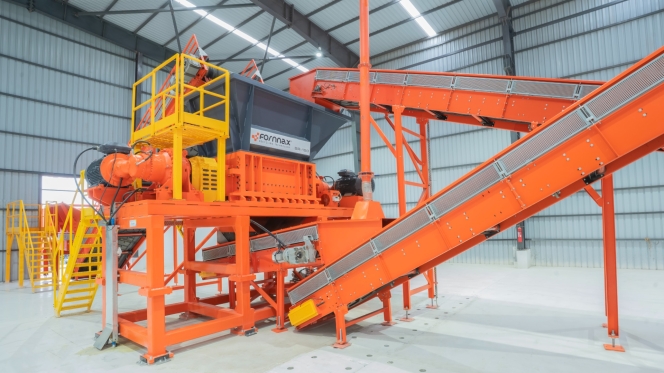
Fornnax has officially launched one of the world's largest integrated hubs for recycling innovation: a New Product Development centre and demo plant spanning over 12 acres. This facility is a critical milestone in the company's strategic vision to become a global leader in recycling solutions by 2030. It is designed to accelerate the advancement of recycling technology through a comprehensive, customer-focused approach.
The centre’s core function is its New Product Development framework, which is built upon a meticulous Gate Review Process. This system ensures precision from conception to completion. The journey begins with market research and ideation from the Sales and Marketing team, followed by a strategic review by the Leadership Team. The Design Team then creates detailed plans that are evaluated by Manufacturing, Service and Safety teams. After final approval, a functional prototype is built and subjected to a rigorous six to eight-month validation phase. The process concludes with design optimisation for mass production, officially launching the equipment for the global market. This method not just upgrades Fornnax's shredders and granulators – enhancing their capacity, energy efficiency and operational availability to 18–20 hours per day – but also validates the equipment for up to 3,000–15,000 hours under real-world conditions

A key feature of the facility is its open-door policy for clients. Customers can bring their specific materials to the demo plant to test equipment performance across various machines and conditions, providing a risk-free environment for informed investment decisions. The centre will also drive research into emerging recycling applications, such as E-waste, cables and lithium-ion batteries, where specialised engineering teams will conduct feasibility studies to design tailored solutions.
Beyond technology, the facility includes an OEM training centre dedicated to developing a skilled workforce. The programme trains operators and maintenance engineers, who gain hands-on experience before being deployed to support Fornnax's customer base. The company will also deliver comprehensive corporate training to domestic and international clients, empowering them with the expertise for optimal plant operation and maintenance. By uniting R&D, testing and training under one roof, Fornnax is establishing a powerful foundation to scale its offerings and lead the next generation of recycling technology.
Jignesh Kundariya, Director and CEO, Fornnax, said, "Innovation in product development is the key to success of becoming a global leader. With this new facility, we now have the speed, flexibility and controlled environment to design, test and validate new technologies in just six to eight months, something that would take significantly 4–5 years at a customer site. Each machine will undergo validation according to global standards, with every critical part and assembly rigorously tested under Engineering Build (EB) and Manufacturing Build (MB) protocols. Our goal is to empower customers with clarity and confidence before they invest. This facility allows them to test their own materials under real-world conditions, compare machines and see results firsthand. It’s not just about selling equipment; it’s about building trust through transparency and delivering solutions that truly work for their unique needs.”
Smithers to Expand Rolling-Resistance Testing Capabilities in China
- By TT News
- November 21, 2025
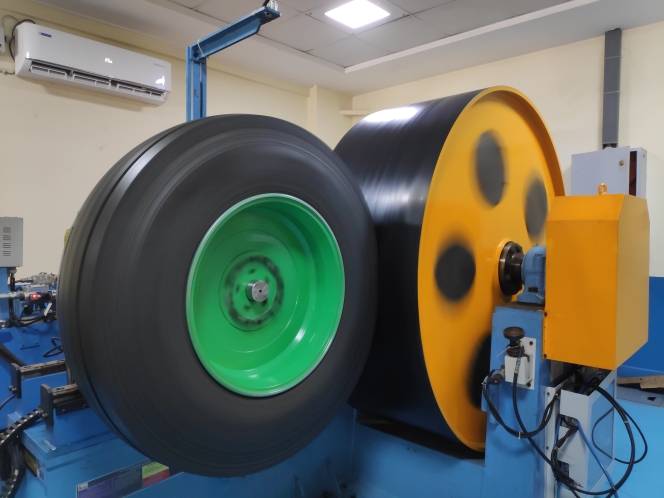
Smithers, the US-based testing and consulting group, is expanding its tyre testing operations in China with three new capabilities designed to better replicate real-world driving conditions. The investment will enhance the company’s rolling-resistance testing at its Suzhou tyre and wheel centre, strengthening its offering to global carmakers and tyre manufacturers.
The new features focus on factors that can influence vehicle energy loss, range, and overall efficiency—a growing concern as regulators tighten standards and EV makers push for longer driving range.
One new capability will allow rolling-resistance testing to be carried out with variations in slip and camber angles for passenger car and light truck tyres. Standard tests are performed at zero degrees, but even small changes in wheel alignment or body movement during real driving can affect energy consumption. The enhanced system lets customers study these effects and refine tyre designs accordingly.
Smithers is also adding high- and low-temperature rolling-resistance testing for truck and bus tyres, an extension of the temperature-controlled testing it introduced for passenger tyres in 2022. The company said demand has risen as manufacturers look to understand how cold weather affects range—a key issue for electric commercial vehicles.
A third new service will allow tyres to be tested together with chassis components such as half-shafts and brake discs. This gives OEMs independent data on how these parts contribute to overall resistance, helping them to identify where energy is being lost and to fine-tune vehicle efficiency.
All three capabilities are expected to be online by 1 December 2025.
“Smithers is seeing increased demand on a global scale for testing of tires and vehicles that more closely mimics real-world conditions,” said Derek Read, Vice President of Asia Pacific / Global Development, Materials Science and Engineering, Smithers. “These new capabilities are strategic investments into the refined, scenario-based testing our clients require to improve both tire and tire-chassis-vehicle system performance.”
Autonomous Robots Transform Continental Retreading Operations
- By TT News
- November 19, 2025
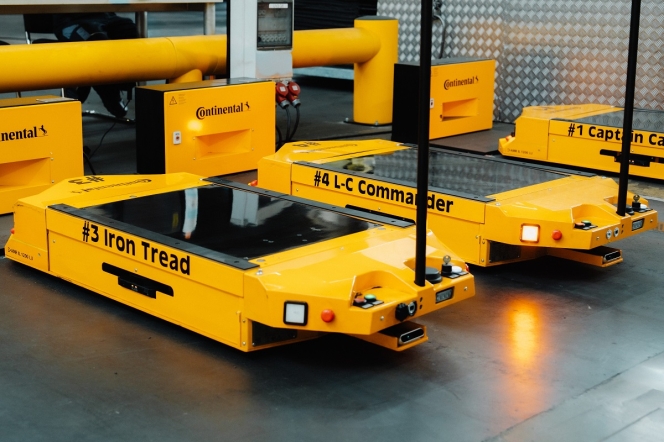
Continental's Hannover-Stöcken plant is pioneering a new era in sustainable manufacturing by seamlessly integrating advanced robotics into its core operations. Since their deployment in March 2025, a team of seven autonomous mobile robots (AMRs) has become the central nervous system for material transport, fundamentally reshaping the workflow for retreading truck and bus tyres.
This shift to automation has profoundly changed the human role on the production floor. Employees, once tasked with the physically strenuous job of manually moving heavy tyres using cranes and trolleys, are now focused on more cognitively demanding responsibilities. Their expertise is directed towards machine setup, process oversight and meticulous quality control, making their work more ergonomic and skilled.
The AMRs operate with sophisticated independence, navigating the production hall using a fusion of sensors, 360-degree cameras and AI-driven software. They efficiently ferry ‘green’ tyres between critical stages: from the building machine, where fresh rubber is applied, to the curing presses for vulcanisation and finally towards inspection. This automated coordination is digitally linked to the plant's order system, allowing for dynamic routing to optimise workflow and manage capacity.
This initiative is a cornerstone of Continental's global strategy to modernize tyre production through digitalisation and smart automation. The success in Hannover has already inspired the rollout of similar robotic solutions across the company's international network, from North America to Asia. The move aligns perfectly with the plant's sustainable mission, which is the ContiLifeCycle process itself. This process breathes new life into used tyre casings by carefully inspecting them, applying new tread rubber and vulcanising them to create a product that performs like new. The environmental benefit is substantial, as up to 70 percent of the original tyre's material is reused, significantly conserving resources.
The human element was crucial to the project's success. Continental ensured widespread employee acceptance through comprehensive training and even involved the workforce in christening the robots with creative names. This thoughtful approach has cemented the AMRs not as mere machines but as valued teammates in a shared mission to make tyre production more efficient, sustainable and future-ready.
Felix Hantelmann, head of the ContiLifeCycle plant, said, “Self-driving robots have been supporting our production workflow for six months now. They handle simple, repetitive transport tasks such as moving a tyre from one point to another. The robots are directly connected to our digital order system, so they know exactly where to go and how to coordinate with each other to get there. They are a valuable addition to our daily operations and help create a safe, efficient and ergonomically optimised production environment.”
Continental Deploys Vacuum Tech For Real-Time Tyre Wear Particle Analysis
- By TT News
- November 18, 2025
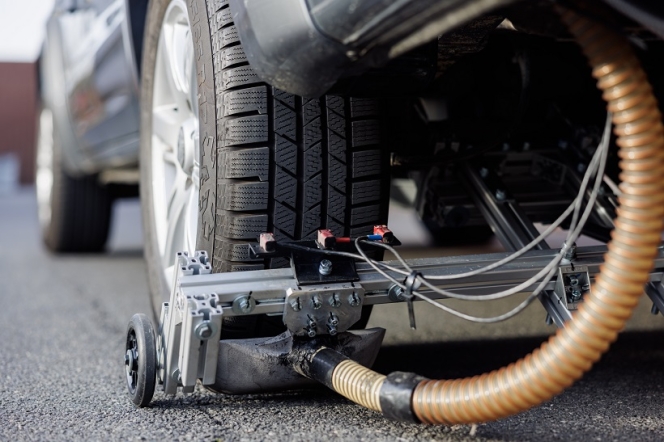
Continental's leadership in reducing tyre wear is fundamentally driven by its pioneering research into how particles are generated. A pivotal element of this strategy is the recently concluded OLRAP project, a collaboration with the Technical University of Braunschweig that broke new ground in real-world particle analysis. The research team engineered a complex experimental vehicle, outfitting it with a custom vacuum system and sensitive particle sensors. This innovative setup enabled the real-time collection and analysis of airborne particles directly at their source – the rolling tyre – under actual driving conditions. The resulting data, which for the first time correlates specific driving dynamics like aggressive acceleration and hard cornering with particle emissions, provides an unprecedented understanding of wear patterns.
This deep, data-driven insight is what directly fuels Continental's product development. By knowing precisely how and when wear occurs, engineers can make targeted optimisations to tread patterns and rubber compounds. The objective is to systematically design tyres that shed less material, thereby directly reducing their environmental footprint from abrasion. This development process rigorously maintains the critical safety and performance standards that drivers demand.
The tangible success of this research-to-development pipeline is confirmed by independent analysis, which shows Continental tyres abrade 11 percent less material than the competitor average. Furthermore, this proactive research and development strategically prepares the company for upcoming regulations like the Euro 7 standard, which will impose limits on tyre wear emissions. Beyond its own laboratories, Continental extends this commitment through cross-industry efforts, co-chairing the Tire Industry Project and contributing to public initiatives aimed at capturing tyre particles from road runoff. Through this integrated approach, Continental is leveraging fundamental scientific discovery to create more sustainable mobility solutions.


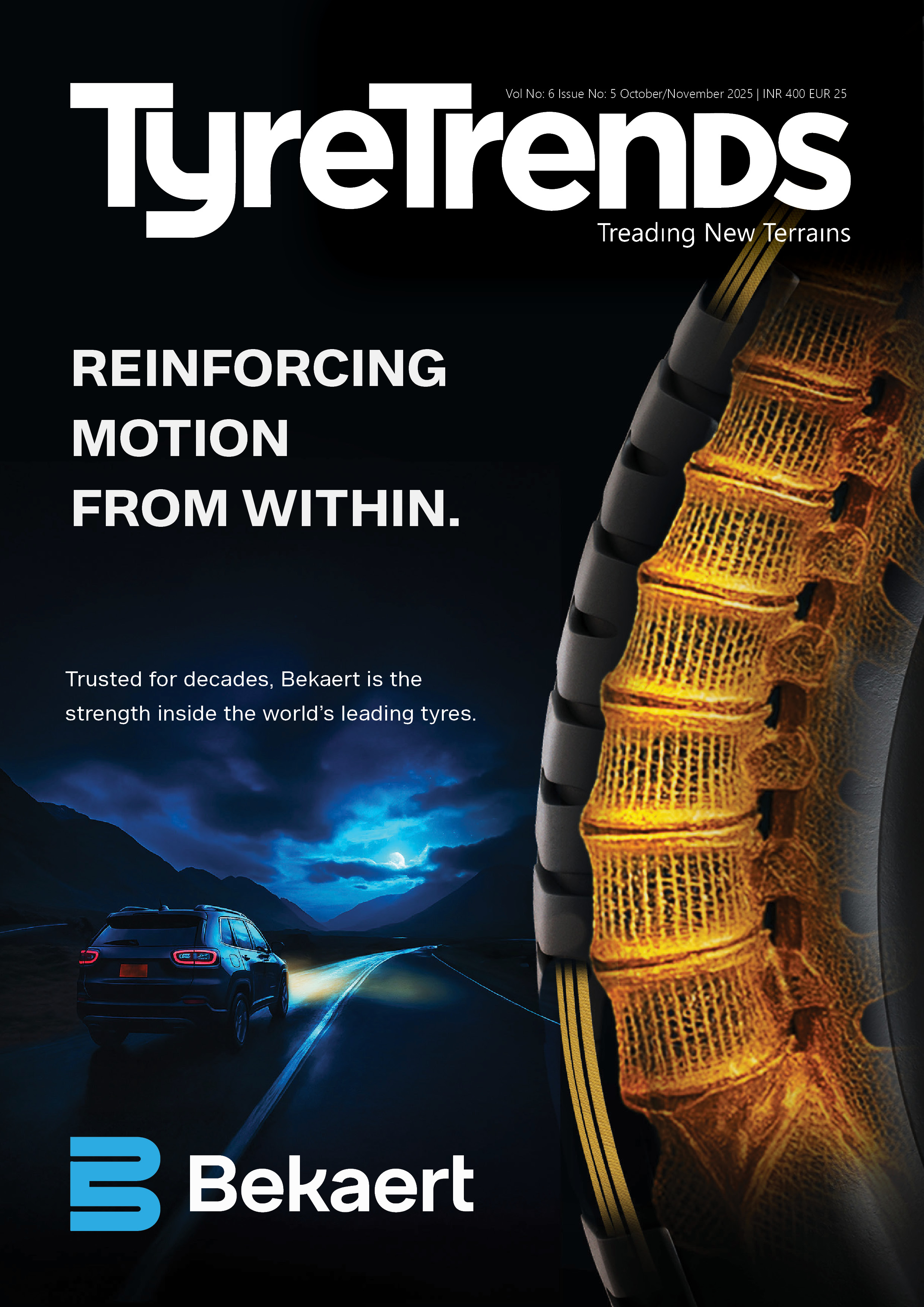

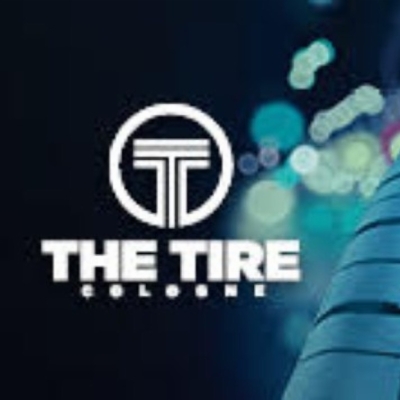


Comments (0)
ADD COMMENT